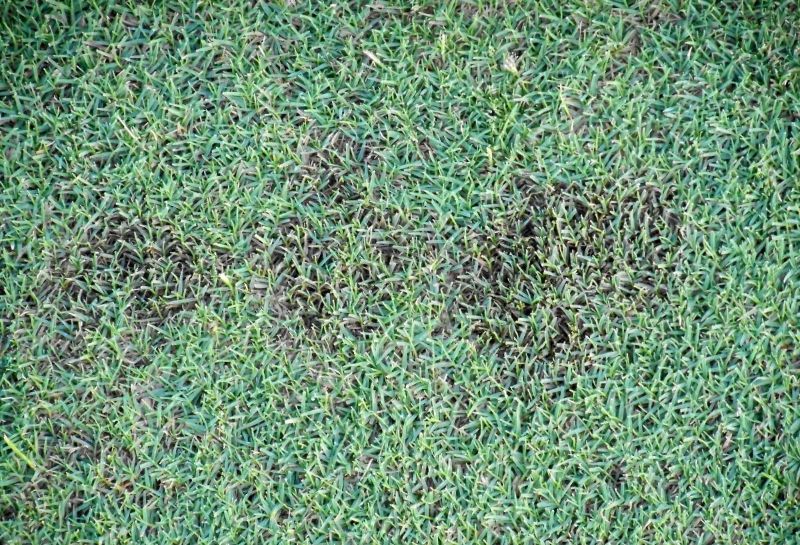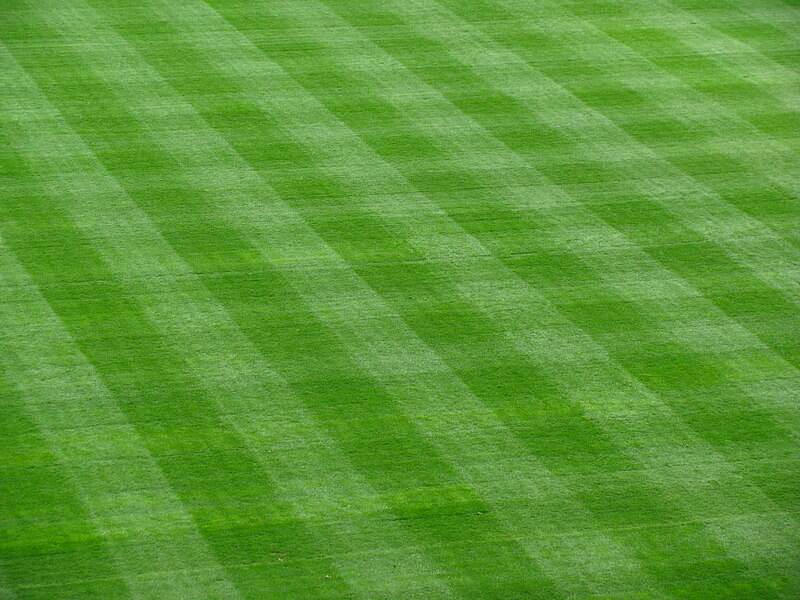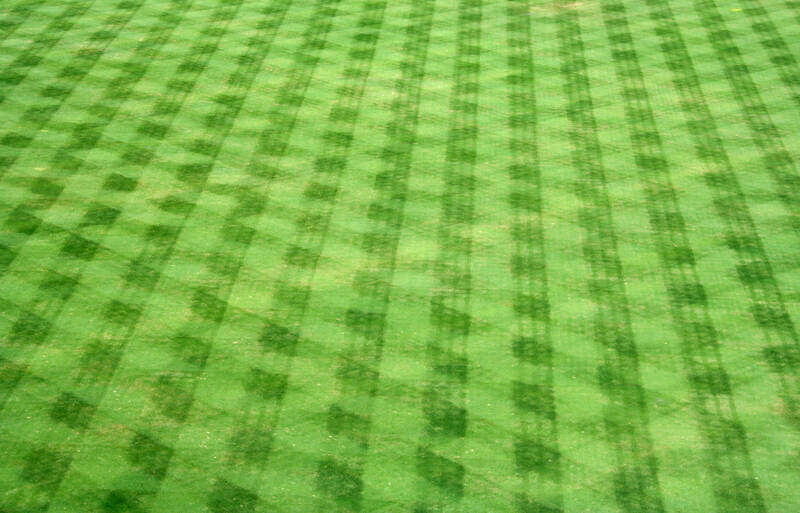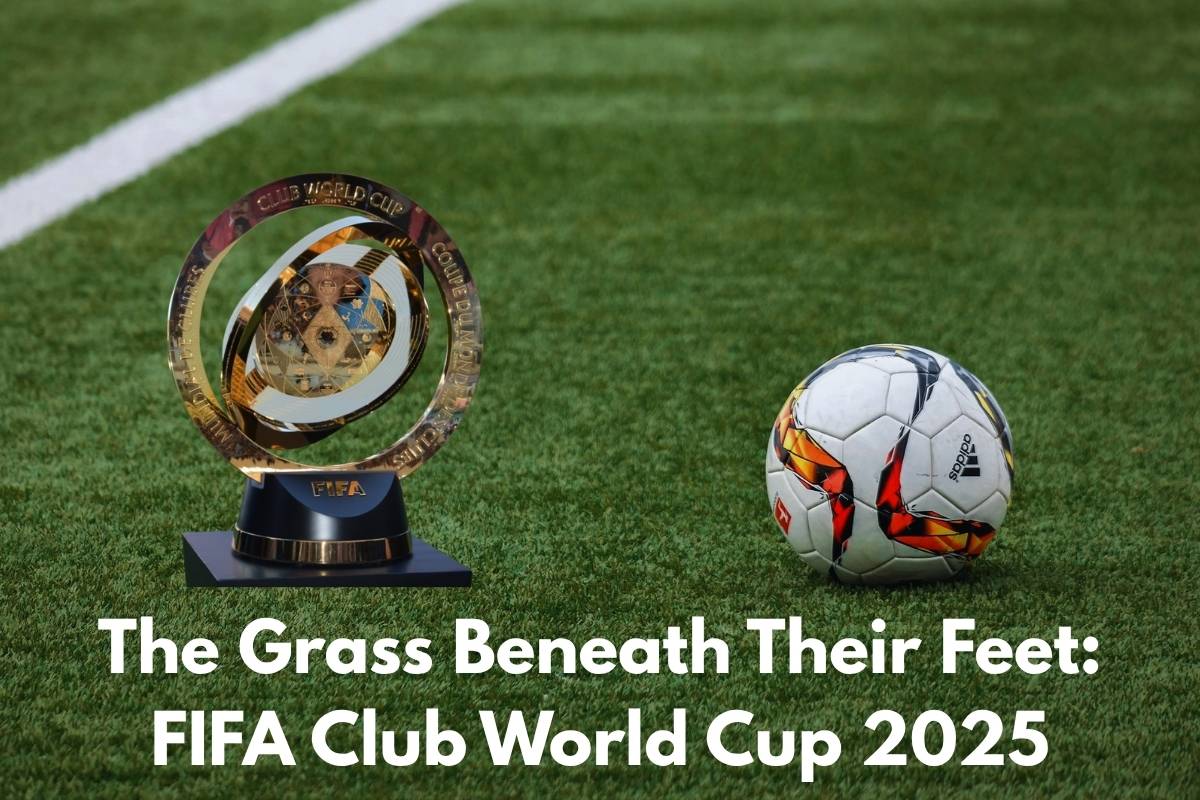
Do you get “green-eyed” when you view the perfectly cut stripes on a soccer field or ballpark? If alternating lines, checkerboards, and diamond patterns would convert your lawn into a personal field of dreams, here’s how to add stripes to your lawn like a pro.
How Lawn Striping Works
Simply put, lawn striping is bending grass blades in opposite directions and having the light reflect off the opposite sides of the blades.
Ryan Moy, head groundskeeper at Minnesota United Football Club’s new $250 million stadium in St. Paul, Minn. explains: “In general, turfgrass species have a darker and lighter shade to their leaf surface. The top of the leaf surface known as the adaxial side of the leaf is darker than the abaxial [the underside of the leaf surface].”
“Not all turfgrass species are created equal with respect to their ability to show that contrast,” but Moy says, “The species we use is very much adaptable to home lawn use.”
Moy says the stadium grass is a blend of Kentucky Bluegrass (Poa pratensis) varieties, including:
- Bluebank
- Fullback
- Hampton
- Bewitched
- Noble
How to Mow Stripes
Get Your Roller

If you want to stripe your lawn, you will need a roller system that attaches to your mower. The roller is a heavy, cylindrical tool made of plastic or metal that bends the grass blades down in the direction you are mowing.
Moy suggests buying a 30-inch Lawn Striping System/Lawn Mower Striping Kit from Toro. You can also make a DIY lawn striper. Whatever you choose, make sure it’s designed for your mower size.
Depending on the model, follow directions when you fill with sand or water to get the right weight for your terrain, soil type, and grass variety.
Prep Your Mower

Photo credit: Scot Nelson / Flickr / Public domain
Make sure your mower blades are sharp and free of debris. You want to ensure the cut is clean and doesn’t rip the grass out by the roots. Dull mower blades can also leave your grass with ragged edges. As a result, fungal diseases like brown patch and dollar spot have a better chance of spreading to other parts of your lawn.
Lawn Mowing Patterns
Decide which pattern you want to create. You don’t have to stick with lines and squares; you can create waves, zig-zags, or circles if you prefer. Make a sketch of how it fits the layout of your lawn, and learn how to stripe around buildings, trees, flower beds, and other parts of the landscape.
Think about the viewpoint – do you want to see the design from the road or driveway? Think about the end result before you start the engine. It might take a few tries before you achieve the desired look.
A basic lawn stripe has alternating strips of grass mown in opposite directions.

- Basic Stripes: Begin mowing around the perimeter of your yard. Then pick one side of the lawn and start cutting a straight line parallel to the edge for your first stripe. At the end, lift the mower deck and turn to face the opposite direction. Put down the mower deck, and mow adjacent and parallel to the last strip.
Continue to cut in different directions until you have striped the entire lawn.

- Checkerboard: Mow the striping effect as explained above. Then start mowing straight lines perpendicular to the finished stripes, lifting the mower at the end of each line and turning to face the opposite direction. This will create the checkerboard pattern that you see in many ballparks.

- Diagonal: Create the basic stripe pattern, then mow a diagonal line beginning at the edge. Remember to lift the mower deck each time you turn.
- Waves: Instead of mowing a basic straight stripe, cut in a wave pattern. Then lift the mower deck and turn the mower. Follow the edge of the first wave pattern, raising the mower deck each time you turn unless you want to create a “switchback” or scalloped design on the edges.
You could also begin your pattern from a point of interest, such as a tree or building. Mow a striped or waved line around the object, then continue in a ripple pattern. Continue until you have reached the end of the lawn, allowing the wave to “run” off the edges.
Mowing Tips for Lawn Striping
To keep your pattern in good shape, mow the grass between 2 and 4 inches high, and don’t cut more than a third of the blade per mow. Taller grass blades will make a design stand out more than a shorter lawn. The sunlight will reflect off the blade surface and let you see the effect of the striping technique.
Best Grass Types for Lawn Striping

What a difference a blade makes. For lawn striping, not all grass types are suitable. Cool-season grasses are ideal because they have long, flexible blades that bend easily when the lawn roller pushes down on them.

Warm-season grasses, such as Bermuda or St. Augustine, have shorter, stiffer blades that are more resistant to bending. It is possible to make stripes in a lawn with warm-season grasses, but it won’t be as distinct.
Pro Tip: For warm-season lawns, it is recommended to use a striping kit for the best results.
Good grass choices for lawn striping include:
- Perennial ryegrass
- Fine fescues
- Tall fescue
- Kentucky bluegrass
Proper Lawn Care Sets Up Your Ground Game

Along with the right grass varieties, you must be consistent with care, watering frequently and applying fertilizer and other nutrients as needed. A robust, healthy lawn will show designs much better.
Your lawn grows more quickly when you mow it correctly: By cutting the tips of grass blades, you stimulate growth. Roots become more robust, discouraging weed growth and creating a denser lawn surface. And more grass blades per square inch means more-impressive stripes.
Striping has a logical purpose, according to Moy. “Over time, changing the direction allows you to cut more of the individual leaf blades to a uniform height. If you always go in one direction, there will be some leaf blades that don’t get cut in that specific direction. In this scenario, those blades of grass continue to lay down and grow in that respective direction.”
Lawn Striping Competitions
Lawn striping has become so popular that there is an international creative lawn stripes competition. In 2016, Allett Mowers began an international search to identify the most inventive mowing patterns and designs. American Dennis West was the 2021 winner.
FAQ: Striping Your Lawn
No. It actually promotes the development of a healthy lawn. Mowing in one direction repeatedly might cause the longer blades of grass to fold over and cover the grass underneath from the light, eventually killing it.
Yes. The first step in maintaining a healthy lawn is to cut your grass properly. Things like how often, how high, and how sharp your lawn mower blades are all factors when mowing your grass.
A height of between 2 and 4 inches tall works best. Remember, never cut more than one-third of the grass blade in a single mowing.
When to Call a Professional
The last thing you may want to do is spend hours in the sun mowing your grass. Hiring a local lawn care expert is the right choice if you want to guarantee a lovely lawn without the work. Thanks to our qualified experts, you’ll have a yard to brag about at your next barbecue.
Main Image Credit: Pxhere




